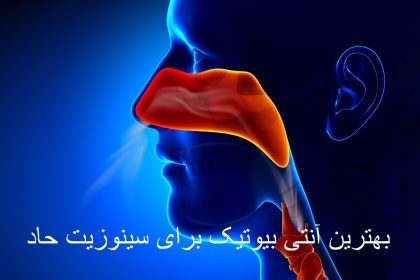Is it beneficial to exercise on a ketogenic diet? Ketogenic diet is very low in carbohydrates, with relatively high fat and protein, which is very beneficial in some cases and will make you lose weight by reducing the level of hunger; But what is the relationship between ketogenic diet and exercise?
Some claim that keto can increase fat burning and endurance, while others believe that this diet can deplete energy levels and impair muscle growth. In this article about vitamin, we will examine the effect of exercise in ketogenic and we will share its benefits and disadvantages with you.
Is exercise possible on a ketogenic diet?
Fortunately, yes! There is no contraindication for exercise in the ketogenic diet. Exercise can be added as a supplement to a high-fat ketogenic diet.
Exercise and exercise in the ketogenic diet can have many benefits for health and weight loss; But just like any other diet, this diet also has its own considerations and you should be aware of them and follow them; We will talk about these features below.
Is walking in Keto the right thing to do?
Yes, walking is okay on a keto diet. Many people who follow the keto diet include regular walking in their daily routine to improve their health and mood, and to experience greater weight loss.
Walking is a low-intensity exercise that can be easily incorporated into your daily routine. Walking (or other low-intensity, gentle exercise) is a great way to get some fresh air, get your heart rate up, and burn calories. But better than these, walking helps to improve the mood and reduce the stress level of a person.
How much weight can you lose by walking on a ketogenic diet?
You can probably expect to lose about 2 pounds per week by walking on a keto diet. But this issue depends on various factors; Like your initial weight, your calorie intake, the amount and intensity of your walking, etc.
If we want to look more closely at this issue, a person can burn about 100 calories in every one and a half kilometers of walking, depending on his speed and body weight. This means that if you walk for an hour at an average speed of about 6 kilometers, you can burn about 300 to 400 calories.
Keep in mind that to lose weight, the important factor “Calorie deficit“observe If your activity of choice is walking and you are new to walking, (better) start with short walks and gradually increase the duration and intensity of your walks as you get stronger.
If you are looking to lose more weight on a ketogenic diet, be sure to exercise under the supervision of a professional trainer. It is very important to have a proper and basic exercise during this period so that you don’t get any injuries. You can consult with vitamin trainers right now.
Benefits of exercise in the ketogenic diet
Studies show that a ketogenic diet may improve your athletic performance in several ways. Now we will talk about the benefits of exercise in the ketogenic diet.
1. Increases body endurance
Although vigorous activity is not recommended on a ketogenic diet, some studies show that keto can improve performance in endurance athletes.
For example, a study of 39 athletes found that being in a metabolic state of ketosis improved their physical endurance. Because in this case, the body has the ability to use fat as an alternative source of energy.
Several studies show that following a ketogenic diet for 12 weeks improves body performance and fat burning during exercise. In addition, another benefit of exercising in a ketogenic diet is speeding up muscle recovery and reducing protein breakdown after endurance exercise.

2. You will burn more fat
Following a ketogenic diet can help your body burn more fat during exercise. A study on 22 athletes showed that following a ketogenic diet increased fat burning over a 4-week period.
Keep in mind, though, that the ketogenic diet consists mostly of fat; Therefore, more fat is burned during exercise. Fat contains significantly more calories per gram than carbohydrates or protein.
So just like any other diet, if you’re looking to lose weight, you need to follow the calorie deficit rule and eat fewer calories than you consume.
3. Your muscles recover faster
Continuing the subject of exercise in the ketogenic diet, we must say that the keto diet can help speed up the recovery of your muscles after exercise. This diet works in the following order to recover the body:
- improve inflammation after exercise;
- increasing muscle recovery after endurance training;
- Decreased creatine kinase and lactate dehydrogenase (two enzymes used to measure muscle damage).
Can exercising on a ketogenic diet cause muscle growth?
Unfortunately, we have to say that it is very difficult to grow muscles during the ketogenic diet. If your goal is just to “maintain your current muscle mass,” then a ketogenic diet can work for you. But if you’re looking to increase and grow muscle mass, it’s hard; Because your caloric intake is less and you don’t get carbohydrates and your energy for training is very low.
If you’re on keto for weight loss, it’s definitely going to be much harder to build muscle; Because your body has less available carbohydrates that have been used as part of the muscle growth process. Finally, you should know that building muscle on keto is not impossible, but it is difficult.

Disadvantages of exercising on a ketogenic diet
We said the benefits of doing exercise in the ketogenic diet; Now it’s time to talk about the pros and cons of exercising on a ketogenic diet.
1. Decreased energy levels and early fatigue
The ketogenic diet greatly limits the intake of carbohydrates, which are your body’s main source of energy. Therefore, exercising on a ketogenic diet can negatively affect your performance and energy levels, especially in the beginning when your body is adapting to the new conditions.
Of course, there is a drop in energy levels early in the diet (in one study, this energy drop lasted about 10 weeks), but over time people’s energy levels return to normal. In this study, although the athletes experienced weight loss and accelerated muscle recovery and improved inflammation, they had problems in high-intensity sports (such as heat).
In addition, other research shows that increased levels of ketones in the blood can increase feelings of fatigue and decrease the desire to exercise.
2. The possibility of impaired muscle growth
If you’re looking to maintain muscle mass, the ketogenic diet may be fine for you, but if you’re looking to gain muscle and bulk, it’s not for you. Because muscle growth requires a certain amount of protein and carbohydrates. This amount is necessary to strengthen muscle synthesis and tissue repair. Sometimes even protein consumption in this diet is not enough and is limited.
For muscle growth and mass, you need a caloric surplus, which if you want to observe ketogenic, you must get a lot of protein and fat, while the intake of carbohydrates is zero, and in this case, muscle growth becomes very difficult.
The best exercises in the ketogenic diet
Since you need a lot of energy for high-intensity sports, and in the keto diet, the main source of energy for the human body, i.e., carbohydrates, is removed, so it will be difficult for you to do such sports. In this diet, it is not suitable to do sports such as sprinting, boxing, speed swimming and relay swimming, jumping rope and heat exercises.
Instead, try incorporating a variety of low-intensity, steady-state activities into your workout routine to get the most out of your diet. Jogging, bicycling, rowing, and yoga are just a few examples of activities that are suitable for the keto diet.
Strength training is possible on the keto diet, but you have to be smart about it. Your training program should be such that your muscles do not get tired and the duration of your training should be short.
In other words, if each training set and its repetitions last 10 seconds, the number of repetitions should be reduced or you should rest more; For example, 5 sets with 5 repetitions would be ideal. If you feel like you don’t have enough strength, it’s okay to lighten the weights.

Key points of exercise in the ketogenic diet
To take advantage of the benefits of exercise in the ketogenic diet, you must pay attention to the following points and follow them so that you do not have any problems and do not lose energy.
1. Heat sports is not a good option
When it comes to high-intensity ketogenic exercise, you are in for a tough workout. Most high-intensity exercise (activity that requires short, intense bursts of energy) is fueled by the carbohydrates you eat. However, when you are on the keto diet, your body is in ketosis, a state where it is burning fat for energy instead of carbohydrates.
In simpler terms, your body burns fat instead of carbohydrates in the ketogenic diet; But fats as a fuel source are not burned as easily as carbohydrates, so the process of providing energy in this diet is generally less useful. As a result, when you are on this diet, it is better to do low-intensity exercises that are more suitable and better for your situation.
2. Cathay flu
In the ketogenic diet, your body gradually gets used to burning more fat for energy and somehow “adapts” to this diet; But when you have just started this diet, it may take some time and you will experience a difficult time to get this adaptation. This period before getting used to and adjusting to the diet is known as keto flu.
Keto flu means that fatigue, lethargy, nausea and even headache that you experience in the first 2 to 4 weeks of the diet. You will also have less energy than usual when exercising on keto. These symptoms are mainly caused by changes in your metabolism, and will go away after a short time as your body adjusts to the new diet.
3. Strict adherence to the keto diet
Now that you’re on the keto diet, you really need to get enough fat and protein. Otherwise, you will lose all the benefits of this diet and your performance will suffer. If you’re not eating enough fat on this diet, then you’re basically not following the keto diet.
Getting less fat and protein than you need can make you extremely hungry, deplete muscle mass, cause you to experience false and extreme weight loss, hair loss and loose skin, and even worse, you can get sick.
Therefore, it is very important that most of your calories come from healthy fat sources such as red meat, fish, avocados, and coconut oil. Also, good protein sources such as chicken fillet, eggs and fish are also good options.

4. Appropriate meals and snacks
It is recommended to have a small meal or snack rich in protein and healthy fats such as a hard-boiled egg or a handful of nuts before your walk. This small serving will help fuel your body for your workout while keeping you in ketosis.
5. Drink enough water
At the end of the issue of exercise in the ketogenic diet, we will discuss the important issue of drinking water. Constipation is always one of the side effects of the ketogenic diet; Because you don’t get fiber in this diet, it is very likely that you will get constipated.
On the other hand, now that your body has no choice but to burn fat for energy, the balance of some electrolytes may be disturbed (the keto diet usually removes a lot of water from your body and you become dehydrated); Therefore, it is very important to drink enough water so that you don’t have any problems.
final word
Ketogenic is a popular diet low in carbohydrates and high in fat and protein. This diet will cause you to lose weight by reducing your appetite and increasing fat burning. There are differences of opinion about exercising in the ketogenic diet; But in general, light and low-intensity exercise is recommended in this diet.
References: healthline – everydayhealth
RCO NEWS
RCO
















